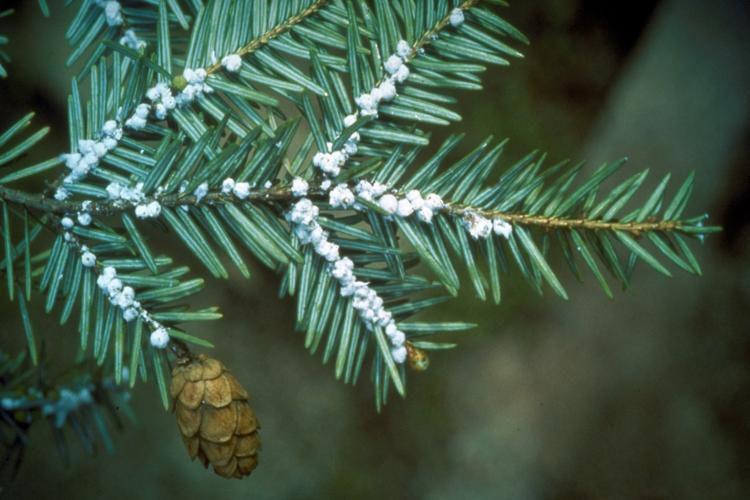Spring Comes Earlier: Preventing Bear Interactions and the Spread of Invasives

Bear coming to the bird feeder for a snack. Photo credit: VTFWS, “Living With Black Bears”
Spring is here, which means that humans are not the only ones getting outside and moving around more. Everything seems to “wake up”—buds pop, insects emerge, and birds return from their wintering grounds. You may have heard the reports year after year of hungry bears stumbling out of their winter slumber, and into your neighbors’ (or your) yard. Bears, along with other mammals that sleep much of the winter, come out at the first sign of temperate weather looking to fill their empty stomachs. If you are like me, your intuition tells you to keep your distance from massive hungry mammals. The risk of not keeping our distance from animals means that bears can become dependent on humans and become a nuisance. “Bears that have become acclimated to human foods are usually euthanized. Remember, a fed bear is a dead bear.”
Vermont Fish and Wildlife Service have given advice for how to keep us and bears safe in early spring. One of their strong recommendations is to take down all bird feeders starting April 1st. However, a more recent article is warning of warmer and earlier springs, and that we may need to remove them in mid-March. “Bears are very fond of suet and bird seed, especially black oil sunflower seed, which they can smell from a long distance,” says Forrest Hammond, Vermont bear biologist. In this article, VFWS gives other recommendations on how to reduce other smells attractive to bears.

The white fuzzy clusters are hemlock woolly adelgid casings. The casings disappear in the warmer months when the aphids leave them to feed on the hemlock leaves.
Photo courtesy from Vermont Invasives.
Bears are not the only organisms that are moving and squirming in the early spring months. A lesser-known threat to landowners is hemlock woolly adelgid (HWA), which is a small, aphid-like invasive insect that feeds on hemlock species in North America. HWA are very small (1.5 mm) and are often hard to see but they can easily be identified by the white, cotton- like woolly masses they form on the underside of branches at the base of needles. These “woolly” masses are produced in the winter, and they are about one-quarter the size of a cotton swab.
In spring, the aphids become active, and they crawl out of the woolly casings and begin to feed on the hemlock’s leaves. Hemlocks provide significant habitat for deer, birds, and other wildlife. Hemlocks along streams can keep water temperatures cool in the heat of summer, reduce erosion by stabilizing stream banks and prevent invasive plants from taking root. Due to the pervasive nature of HWA, it can infest hemlocks quickly and greatly reduce the life span of the tree and make the tree more susceptible to other infections. Infested trees may die in four to six years.
On the Vermont Invasives website (an excellent resource, by the way), specialists also recommend removing bird feeders from April to August to reduce the spread of HWA. Birds offer easy and convenient transportation for HWA, and it is presumably how HWA was first introduced into southern Vermont. To learn more about HWA check out these three resources:
Bottom line: remove your bird feeders in early spring and keep your land and wildlife healthier and safer!
Written by Astara Zuorski, Americorps Member Land Management Coordinator at VLT